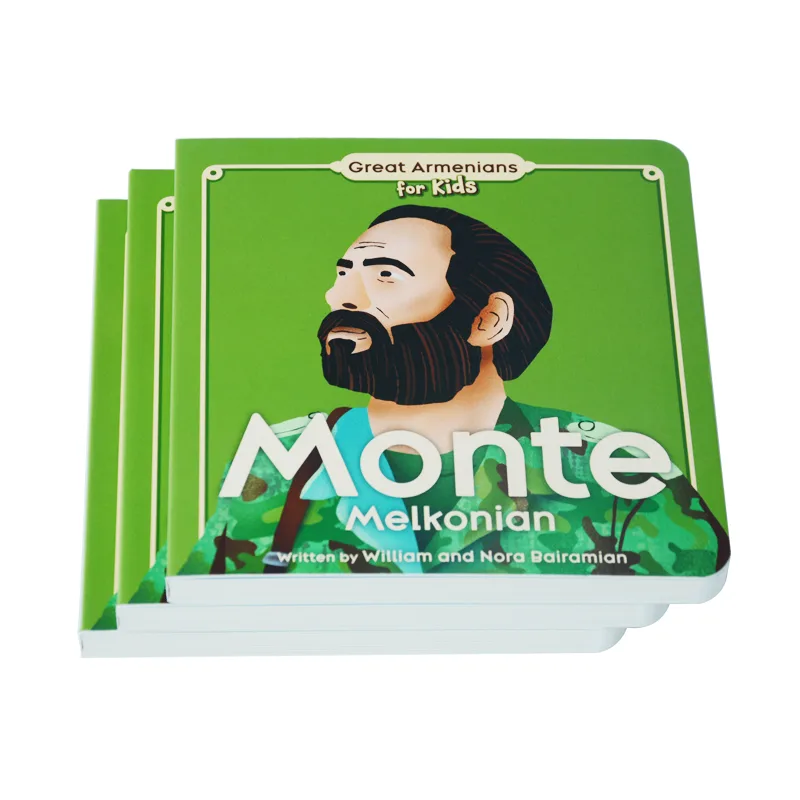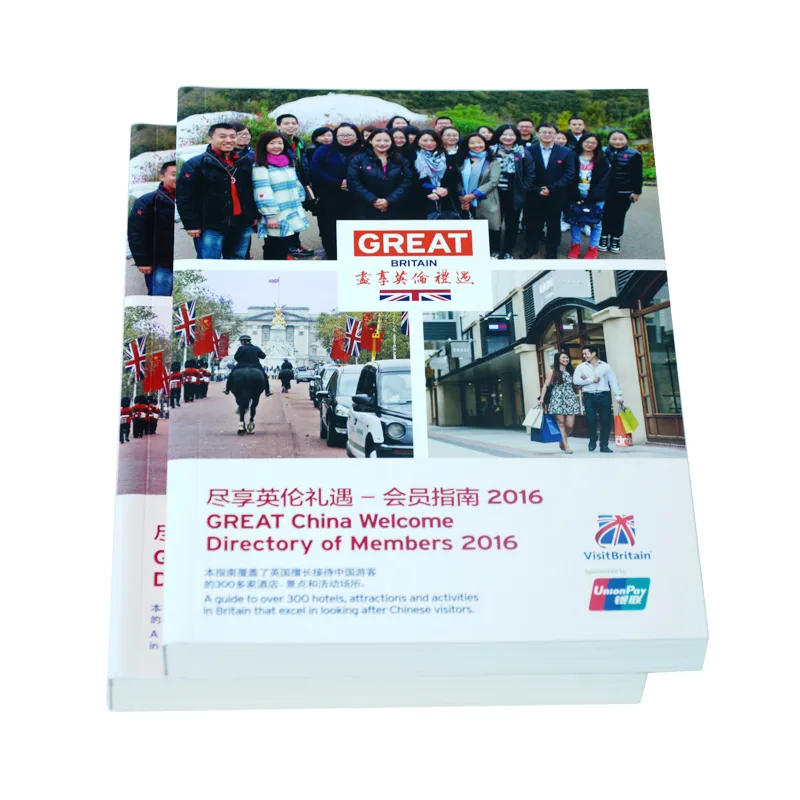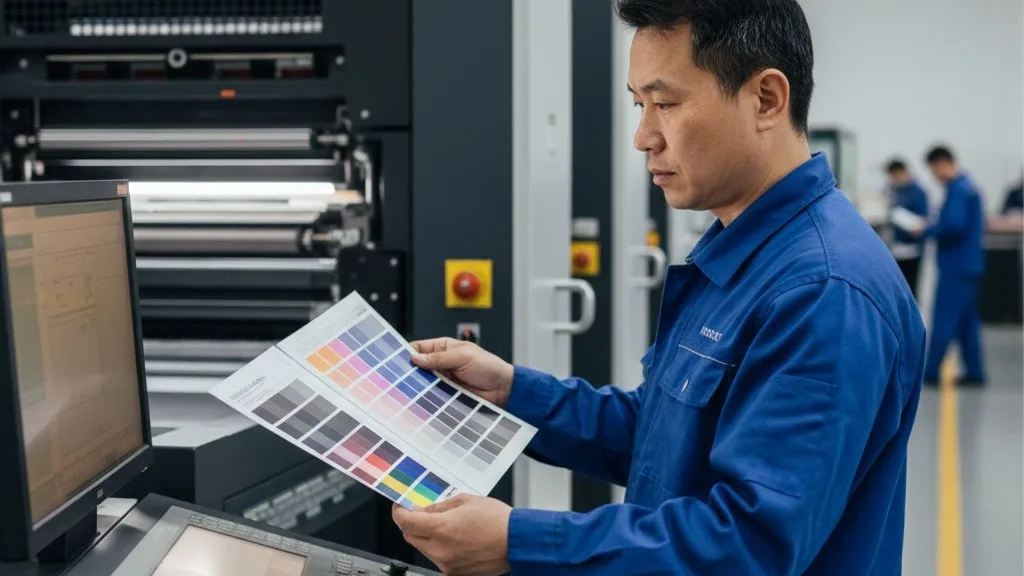Choosing the right bookbinding is more than a simple production choice; it’s a critical decision that impacts your brand’s perceived value and the longevity of your materials. This guide provides a clear, strategic framework to help you decide between perfect bound and sewn perfect bound, ensuring you select the most effective option for your project’s goals and budget.
Perfect bound books use adhesive to bind single pages, offering a cost-effective solution for materials like magazines and paperbacks. Sewn perfect bound books first stitch pages together in sections (signatures) before gluing, providing superior durability and a true lay-flat quality ideal for high-end catalogs, annual reports, and brand manuals.
Now, read on to discover a simple decision matrix, learn how to frame this choice in terms of ROI, and uncover the common “PUR Trap” that could compromise your next important project.
Understanding the Fundamentals of Binding
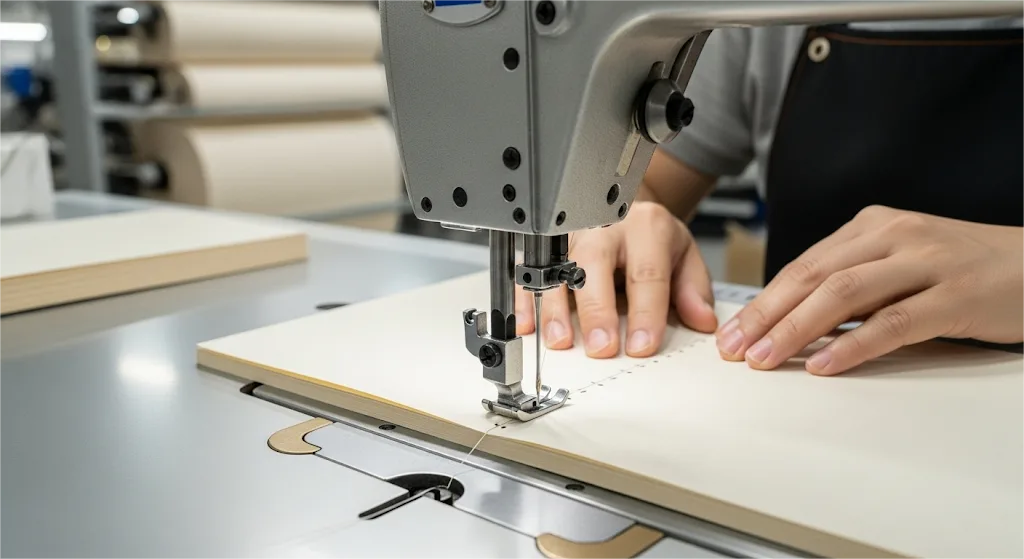
To make an informed decision, you first need to understand what you’re actually choosing. On the surface, both perfect bound and sewn perfect bound books can look similar, but their internal construction is fundamentally different.
This difference in structure is what determines the final product’s durability, user experience, and overall quality.
Let’s break down the two processes.
The Adhesive Approach
Think of a standard perfect bound book as a precisely stacked block of individual paper sheets held together by a strong adhesive. The process involves:
- Stacking: Single-leaf pages of your document are printed and collated into a neat block.
- Milling: The spine edge of this block is milled or “roughed up” to create more surface area for the glue to adhere to.
- Gluing: A hot, strong adhesive (like EVA or the more robust PUR glue) is applied directly to the spine.
- Attaching the Cover: The cover is then wrapped around the page block and pressed firmly onto the glued spine.
The result is a clean, crisp-looking book. This method is fast and cost-effective, making it the standard for many commercial publications.
The Craft of Thread and Glue
Sewn perfect binding, often simply called “sewn binding,” is a more traditional and structurally superior method rooted in the craft of bookmaking. It involves both sewing and gluing for maximum integrity.
- Folding into Signatures: Instead of single sheets, pages are printed on large sheets and then folded into sections called “signatures.” A signature typically consists of 16 or 32 pages.
- Sewing: These signatures are then collated in order and physically sewn together with thread, one by one, to form a durable book block.
- Gluing: A layer of adhesive is applied to the sewn spine to further secure the threads and provide a surface for the cover to attach to.
- Attaching the Cover: Finally, the cover is attached to the glued spine.
This combination of sewing and gluing creates a book that is exceptionally strong and flexible.
Why This Choice Defines Your Printer
Here is an insight that most discussions on this topic miss: when you choose a binding method, you are also choosing the caliber of your print vendor. The reality is that most quick-print shops and smaller digital printers are equipped for perfect binding because it’s automated and efficient.
However, sewn binding requires specialized, expensive machinery and a higher level of craftsmanship.
Therefore, when you start specifying sewn perfect binding for your project, you are elevating your search from standard commercial printers to the realm of high-quality book and art catalog producers.
This distinction is critical because it frames your decision not just as a technical choice, but as a selection of a long-term printing partner who is capable of meeting your highest brand standards.
A Four-Dimension Comparison for Brand Leaders
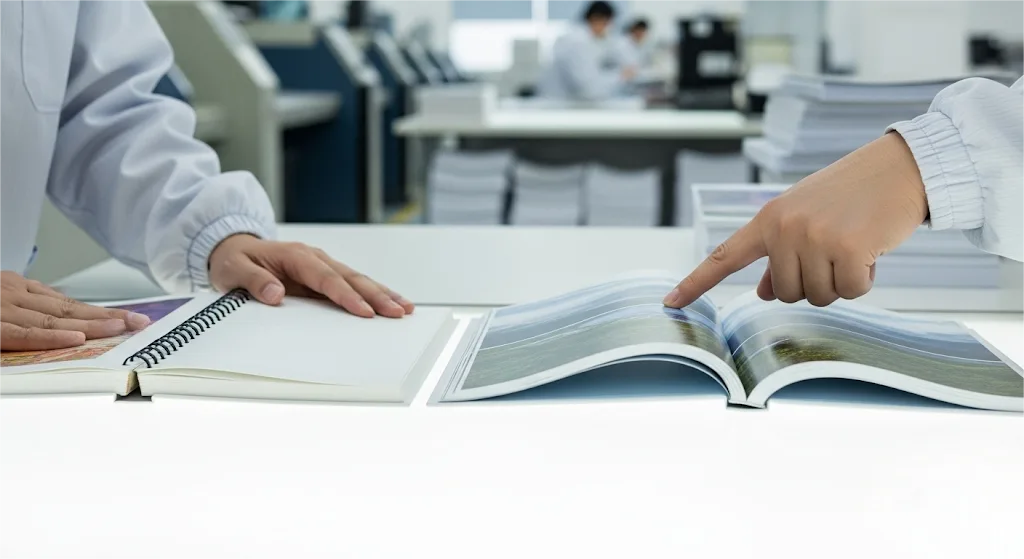
To move beyond a simple technical comparison, you need to evaluate these binding methods through the lens of a brand manager. We’ll analyze them across four critical dimensions that directly impact your project’s success and your brand’s reputation.
Durability and Lifespan
The simple truth is that a book is only as good as its spine. For any document that needs to last—a training manual, an annual report, or a product catalog—durability is non-negotiable.
- Perfect Binding: While PUR adhesive has made perfect binding stronger than ever, it is still fundamentally reliant on a single layer of glue. Under high stress or frequent use, pages can eventually work loose. We once had a client, a software company, who chose standard perfect binding for 2,000 technical manuals for a major trade show to save on costs. By the second day, they noticed manuals on the display table were already showing spine cracks, and a few had pages detach in the hands of potential clients. The perceived failure of their printed material subtly undermined their message of technical reliability.
- Sewn Perfect Binding: With its thread-sewn signatures, this method is in a different league. Industry tests measure durability using “page pull strength.” A sewn binding is four to five times stronger than a standard perfect binding, meaning its pages can withstand significantly more force. This is the same binding method used for library books and high-quality textbooks for one reason: it is built to endure constant use.
User Experience and the Lay-Flat Difference
How a person interacts with your printed material directly influences their perception of your brand. The ability of a book to lay flat is not a minor feature; it is a critical component of the user experience.
- Perfect Binding: A perfect bound book cannot open to a true 180 degrees. It naturally arches in the middle, creating a “gutter” that can obscure content. This forces the reader to hold the book open, preventing them from easily taking notes or referencing the material hands-free. For any document containing crucial cross-page visuals—like architectural plans, financial charts, or product photography—this gutter causes visual disruption and information loss.
- Sewn Perfect Binding: This is the only softcover method that allows a book to lie completely flat when open. The sewn signatures act like hinges, allowing the pages to open fully without resistance. This ensures that your panoramic images are viewed seamlessly and your data tables are read without distortion. It’s a sign of quality that communicates respect for the reader and the content itself.
Brand Image and Perceived Quality
Your printed collateral is a physical ambassador for your brand. Its construction speaks volumes before a single word is read.
As the renowned Pentagram partner and brand strategist Michael Bierut notes, “The details in their construction are not trivial; they are the tangible expression of the brand’s commitment to quality, care, and its audience.”
A sturdy, well-crafted book feels important and valuable, transferring those qualities to the brand it represents. A flimsy one, conversely, suggests a willingness to compromise on quality.
The Budget Question
Yes, sewn perfect binding carries a higher upfront cost. Depending on the project quantity, you can expect it to be 15% to 30% more expensive than a standard perfect bound equivalent. This is the point where many projects default to the cheaper option.
But the real question isn’t, “Can we afford it?” The question is, “Can we afford the risk of not using it for our most important projects?” This reframes the decision from one of cost to one of value and risk management, which brings us to the most critical part of your analysis: the return on investment.
Why the More Expensive Option Can Be Cheaper

That 15% to 30% cost increase for sewn binding often stops conversations in their tracks. But it’s here that you need to shift your thinking from an expense mindset to an investment mindset. The initial savings from choosing perfect binding can be quickly erased by the long-term costs of a subpar product.
To make a truly strategic decision, you need to look at the total return on investment (ROI).
Moving from Upfront Cost to True Cost of Ownership
The price on a printing quote is only one part of the equation. The “true cost of ownership” includes the intangible costs associated with the product over its entire lifecycle. Ask yourself:
- What is the cost of a lost sales opportunity if your product catalog falls apart during a key client meeting?
- What is the cost to your brand’s reputation if your high-end lookbook feels cheap and disposable?
- What is the cost of reprinting a project because the initial run didn’t withstand its intended use?
When you factor in these potential negative outcomes, the initial savings from perfect binding can look like a poor investment. A well-constructed, sewn-bound book that performs flawlessly for years delivers a far greater return than a cheaper alternative that fails prematurely.
The “Cost Per Effective Impression” Formula
Let’s reframe how you calculate value. Instead of looking at the cost per book, consider the cost per effective impression. An effective impression is a positive interaction a user has with your brand through the printed material.
A flimsy book that quickly shows wear might deliver a handful of positive impressions before it creates a negative one. In contrast, a durable, user-friendly sewn-bound book delivers a positive, high-quality impression every single time it is opened.
Over the long term, the cost per effective impression for the sewn-bound book is significantly lower because its quality and longevity ensure every interaction is a positive brand-building moment.
Empowering Your Budget Discussions
Framing your decision in this way gives you a powerful tool for internal discussions. When you present the options to your CFO or CEO, you are no longer just asking for more money for a “fancier” binding.
You are presenting a clear business case based on risk management and long-term value. You can confidently state that by investing an additional 15% upfront, you are safeguarding the entire project’s investment, protecting the brand’s reputation, and ensuring the material achieves its strategic communication goals for its full intended lifespan.
This isn’t an expense; it’s brand insurance.
To make this conversation even more effective, structure your argument around these key points:
- Present it as Risk Mitigation: Explain that the lower-cost option introduces a tangible risk of product failure in front of key stakeholders. Ask, “What is the potential cost to our reputation and future business if this manual fails during a multi-million dollar client pitch?” This shifts the focus from the cost of printing to the potential loss of revenue.
- Highlight Asset Longevity: Emphasize that you are creating a long-term brand asset. You can say, “We can spend $X and create an asset that lasts for one year, or we can invest $X + 15% and create an asset that represents our brand with integrity for five years or more. The long-term cost per year is actually lower with the higher-quality option.”
- Connect to the Overall Project Budget: Contextualize the additional cost. For a project with a total budget that includes design, copywriting, and distribution, the incremental cost of upgrading to sewn binding is often a very small percentage of the total investment. It is the final step that ensures the other 95% of the investment is properly protected and presented.
By leading with a strategic, value-based argument, you transform a simple budget request into a demonstration of your business acumen and your commitment to protecting the company’s brand—a language that every executive understands.
The Choice Matrix & Pro-Level Tips
Theory and frameworks are essential, but you also need practical tools to make confident decisions quickly. This chapter provides a straightforward decision matrix and some professional tips to help you navigate the nuances of binding and avoid common industry pitfalls.
The Binding Choice Matrix
Use this simple matrix to guide your decision based on your project’s key attributes. Find your project type in the left column and see which binding method is the recommended, optimal, or acceptable choice.
| Project Attribute | Standard Perfect Binding (EVA) | High-Strength Perfect Binding (PUR) | Sewn Perfect Binding |
|---|---|---|---|
| Lifecycle: Short-Term Use (e.g., event flyers, disposable reports) |
Acceptable | Good | Not Necessary |
| Lifecycle: Long-Term Use (e.g., brand manuals, yearbooks) |
High Risk | Acceptable | Recommended |
| Page Count: Under 150 Pages | Acceptable | Good | Optimal |
| Page Count: Over 250 Pages | High Risk | Risky | Recommended |
| Contains Critical Crossover Spreads | Not Recommended | Risky | Recommended |
| Audience: General Internal Staff | Acceptable | Good | Optimal |
| Audience: VIP Clients / Investors | Not Recommended | Acceptable | Recommended |
| Priority: Lowest Possible Cost | Best Choice | Good | N/A |
| Priority: Highest Quality & Durability | N/A | Good | Best Choice |
Need Flawless Softcover Book Printing?
Whether you need the cost-effectiveness of perfect binding or the premium lay-flat quality of sewn binding, our experts ensure your project is a success. We provide the guidance and quality control you need for a professional result.
The Golden Rules: When Sewn Binding is Non-Negotiable
For certain projects, the risk of choosing a lesser binding is too high. Consider sewn binding to be the mandatory choice when your project meets any of the following criteria:
- It is a cornerstone brand asset: Think of your corporate history book, your brand “bible,” or a high-end coffee table book. These items are designed to last and make a lasting impression.
- It will be used frequently and for a long time: Any training manual, reference guide, or frequently used catalog must be able to withstand the wear and tear.
- It features critical cross-page visual content: If your design relies on stunning, seamless two-page spreads, only sewn binding can deliver the true lay-flat experience required.
- The audience is of the highest importance: When presenting to your board of directors, key investors, or top-tier clients, the physical quality of your materials must be flawless.
Avoiding the “PUR Trap”
In recent years, PUR (polyurethane reactive) adhesive has become a popular middle-ground option. It’s significantly stronger than traditional EVA glue, leading some printers to claim it’s “nearly as good as sewn binding.”
This is a misleading oversimplification—a “PUR trap.”
While PUR adhesive does an excellent job of solving the strength problem and reducing the risk of pages falling out, it does not solve the lay-flat problem. A PUR-bound book will still arch in the middle and will not open to a true 180 degrees.
To avoid this trap, you must verify the physical properties yourself. This is where the story of the “dummy book” becomes a vital lesson.
We worked with a high-end architectural firm on their annual portfolio. Their printer suggested PUR to save costs. Before committing to the full print run, we insisted they create two blank “dummy” books—one PUR and one sewn—using the exact paper and page count of the final project.
When the client held them, the decision was instant. The PUR book, while strong, distorted their beautiful panoramic shots in the gutter. The sewn-bound book laid perfectly flat, presenting their work without compromise.
Always ask your printer for a physical dummy book. No PDF or digital proof can replicate the real-world feel and function of your final product.
Integrating Binding into Your Workflow
A successful print project is about more than just a great final product; it’s about a smooth and predictable process. Choosing sewn perfect binding is not a decision that can be made in a vacuum. It has significant implications for your project’s timeline, design process, and vendor relationships.
To avoid costly delays and last-minute crises, you must treat the binding choice as a foundational project parameter, not a final-stage option.
Building in a Longer Production Cycle
One of the most common mistakes brand managers make is underestimating the production time required for sewn binding. Unlike a standard perfect bound book that can often be turned around in a few days, sewn binding is a more meticulous, multi-step process that requires additional time.
The process of folding, collating signatures, sewing the book block, and then binding it can easily add two to four business days to your production schedule. We once worked with a financial services client who, one week before their annual report was due to be shipped to shareholders, decided they wanted to “upgrade” from PUR binding to sewn binding to make a better impression. They viewed it as a simple swap.
We had to explain that this was impossible without missing their deadline. The entire file would need to be re-processed and re-planned for signatures, and the production schedule simply didn’t have the extra days required for sewing. They were forced to choose between missing their deadline or proceeding with a binding they felt was second-best.
The lesson is clear: binding is part of the project’s foundation, not the finishing trim.
Collaborating with Your Designer from Day One
The choice of sewn binding must be made before the design process begins. This is because sewn binding is based on “signatures”—those folded sections of 16 or 32 pages. For maximum efficiency and cost-effectiveness, the total page count of your book should be a multiple of 16 (e.g., 128, 144, 160 pages).
If your designer creates a 155-page document without this knowledge, the printer will be forced to add a blank signature or create a smaller, less efficient one, both of which add unnecessary cost and waste. Informing your designer upfront allows them to plan the layout and content to perfectly fit the signature structure.
Finding the Right Craftsperson
As mentioned earlier, choosing sewn binding means you are looking for a different type of print partner. You are moving from a high-volume commercial printer to a craftsman-level book producer.
When vetting potential vendors, don’t just ask, “Can you do sewn binding?” Ask to see samples of their work. Look at the tightness of the stitching, the squareness of the spine, and the overall fit and finish. A true expert will be proud to show you their craftsmanship.
Make Your Final Call with Absolute Confidence
You now possess a comprehensive framework for navigating the Perfect Bound vs. Sewn Perfect Bound decision. This choice, as we’ve explored, is far more than a line item on a printer’s invoice. It is a strategic decision that reflects on your brand’s commitment to quality, impacts your audience’s experience, and ultimately determines the long-term value of your printed materials.
By moving beyond a simple cost comparison to an analysis of durability, user experience, and brand perception, you have equipped yourself with the expertise to make the right call for every project.
You can now confidently select the appropriate binding, manage the production process effectively, and justify your decisions with a clear, ROI-based argument. You understand that for your most critical projects, investing in a superior sewn binding isn’t an expense—it’s an investment in your brand’s integrity.
So, for your next important project, ask yourself: are you looking for a short-term deliverable, or are you creating a lasting brand asset? If your goal is to produce materials that represent the very best of your brand and stand the test of time, the choice becomes clear.
Ready to Start Your Printing Partnership?
You’ve created the vision. Now let our experts handle the printing with the quality your project deserves.
References & Notes
[1] Page Pull Strength: This is an industry-standard test that measures the force required to pull a single page from a book’s binding. A higher value indicates a stronger, more durable bind. Sewn bindings consistently outperform adhesive methods in these tests due to the physical reinforcement of the thread.
[2] Michael Bierut: A partner at the international design consultancy Pentagram and a globally recognized graphic designer. His work often emphasizes the importance of physical objects and details in communicating brand value, making his perspective highly relevant to decisions about print quality.





